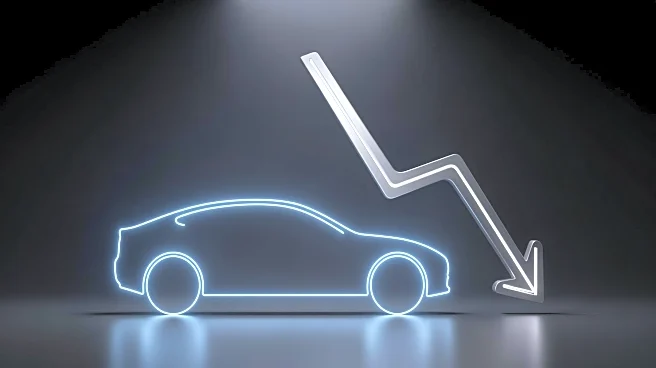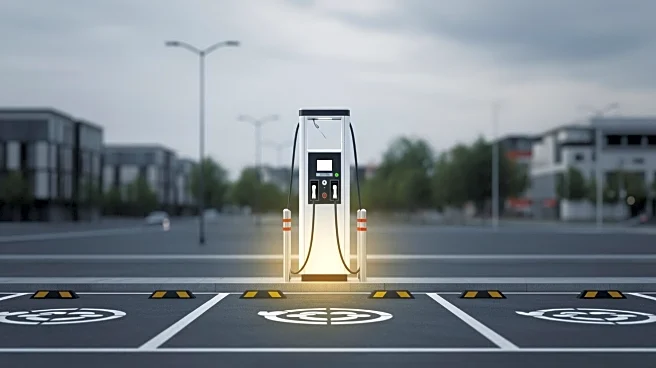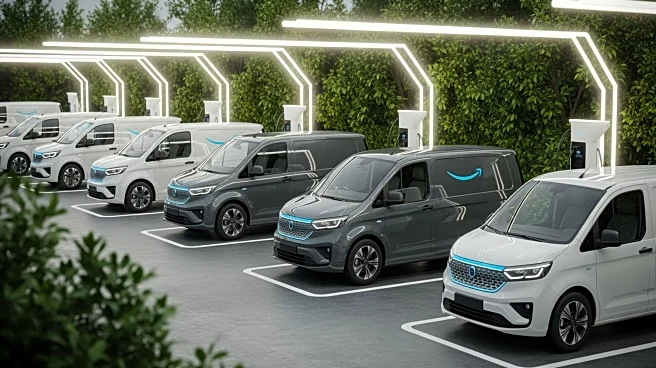What's Happening?
In October 2025, the United States saw a significant drop in plug-in electric vehicle (PEV) sales, with a 26.9% decrease compared to October 2024. This decline follows a temporary boost in sales during
September, attributed to the end of the US EV tax credit by Republicans. Despite the drop, over 1.5 million PEVs were sold in 2024, marking a 7% increase from 2023. Battery electric vehicles (BEVs) accounted for 80% of these sales. The cumulative sales of PEVs in the US have reached over 7.6 million by the end of October 2025.
Why It's Important?
The decline in EV sales in October highlights the impact of policy changes on the automotive industry. The removal of the EV tax credit has led to a significant reduction in consumer incentives, affecting sales figures. This shift could influence the strategies of automakers and policymakers as they navigate the transition to sustainable transportation. The decrease in sales may also affect the broader goals of reducing carbon emissions and promoting clean energy solutions in the US.
What's Next?
The automotive industry may need to adapt to the changing policy landscape by exploring alternative incentives or focusing on technological advancements to attract consumers. Policymakers might reconsider the structure of tax credits to support the growth of the EV market. Additionally, stakeholders will likely monitor the long-term effects of these changes on the industry's growth and sustainability goals.
Beyond the Headlines
The shift in EV sales could have broader implications for the US economy, including potential impacts on job creation in the automotive sector and the development of related industries such as battery manufacturing and charging infrastructure. The changes may also influence consumer behavior and perceptions of electric vehicles as viable alternatives to traditional combustion engines.












